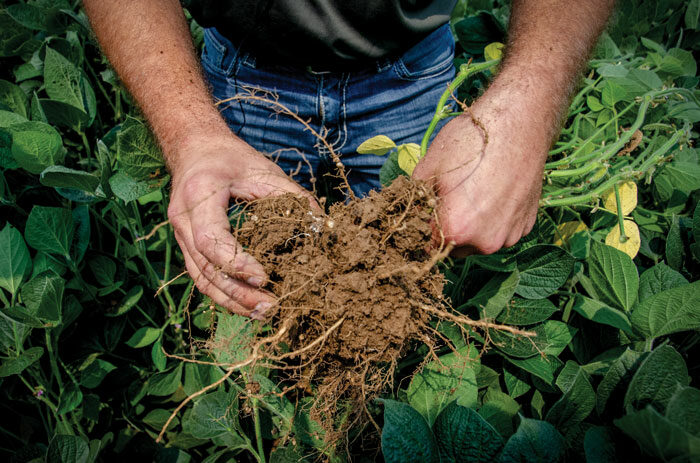No-Till Farmer
Get full access NOW to the most comprehensive, powerful and easy-to-use online resource for no-tillage practices. Just one good idea will pay for your subscription hundreds of times over.

NICE NODULES. Ron Bolender grows about 2,000 acres of soybeans every year on his 3,000-acre farm in southern Ohio. Maintaining soil fertility is one of Bolender’s top strategies for achieving profitability.
Though he is a no-tiller now, third-generation producer Ron Bolender grew up using conventional practices on the family farm, where they raised 30-50 acres of labor-intensive burley tobacco each year. “We did it all — we used to moldboard plow, disc and work the ground,” he says.
Situated on the rolling ground near Felicity in southern Ohio, Bolender says that like so many others, he was originally skeptical of no-till. “Back in 1990, if someone had told me you could drill beans without plowing and have them come up, I wouldn’t have believed them.”
But now, Bolender can’t imagine farming any other way and he says the simplicity of his 3,000-acre no-till operation is the key to his success, as the reduced fuel, equipment needs and manpower requirements help keep his operation profitable.
“We’re farming less and doing a better job,” says Bolender. “Profitability is the name of the game for me.”
After graduating from high school in 1974, Bolender joined his father on the family farm. The Bolenders also started raising grain farm that year, inspired by the $8 per bushel price soybeans had been commanding in 1973.
NAME: Ron Bolender
LOCATION: Felicity, Ohio
ACRES: 3,000
YEARS NO-TILLING: 30
CROPS: Corn, soybeans
ANNUAL PRECIPITATION: 43 inches
PRIMARY SOIL TYPE: Heavy clay
IRRIGATION: None
LIVESTOCK: None
Unfortunately, Bolender explains, “in 1974, soybeans were only $4 per bushel.”
But tobacco remained their primary crop for the next two decades.
When Bolender needed to reduce manpower in…